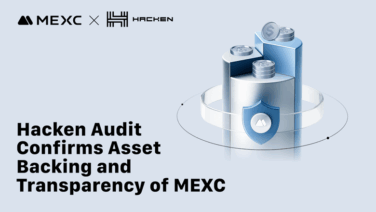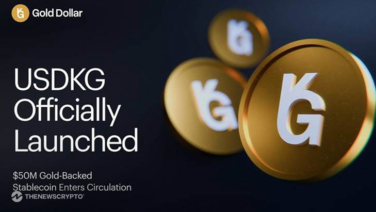As the digital asset market matures, investors are becoming increasingly selective about which cryptocurrencies show long-term resilience. Litecoin (LTC), often referred to as the “silver to Bitcoin’s gold,” has maintained a steady presence due to its fast transaction speeds and institutional adoption narratives. However, new blockchain entrants such as Qubetics are carving a different path, focusing on real-world asset (RWA) tokenisation in a decentralised framework.
This article explores the projected growth outlook for Litecoin by 2026, while offering a parallel assessment of Qubetics’ emerging tokenised marketplace — a protocol designed to convert traditional assets into on-chain, tradeable representations. Together, they represent two divergent strategies within the broader crypto economy: one driven by legacy adoption, the other by next-generation infrastructure innovation.
Litecoin’s Performance So Far: A Legacy of Stability
Litecoin, created in 2011, has remained one of the most widely held cryptocurrencies due to its lower transaction fees, quick settlement times, and established liquidity. As of March 2025, LTC trades at approximately $124.62 and holds a market capitalisation close to $9.45 billion. Its recent price trajectory indicates upward momentum, buoyed by renewed institutional interest and structural upgrades like the MimbleWimble Extension Blocks (MWEB) for private transactions.
Recent price action reveals resilience in the face of market volatility. Following a 70% gain over the past six months, Litecoin’s support at $102–$126 remains intact, while the $140–$171 resistance range is seen as a crucial breakout point. From a technical standpoint, a close above $140 could trigger a long-awaited uptrend towards $202 or higher.
Historical adoption trends, along with its correlation with Bitcoin, make Litecoin a prime candidate for institutional portfolios seeking stability. Moreover, the possible approval of a Litecoin ETF, as indicated by recent SEC activity around Canary’s 19b-4 form, could unlock further capital inflows by 2026.
Litecoin Price Prediction 2026: Base Case and Bullish Scenarios
Industry analysts expect Litecoin’s price to rise steadily through 2026, driven by mainstream acceptance, DeFi integration, and second-layer scalability enhancements. Forecasts place the LTC price in a range between $600 and $800 over the next 12–18 months, assuming continued alignment with Bitcoin halving cycles and broader crypto market trends.
A more bullish scenario positions LTC in the $800–$1,000 range, contingent upon key drivers such as:
- Approval and rollout of a Litecoin ETF,
- Accelerated merchant adoption (currently accepted by 4,000+ businesses),
- Upgrades such as Lightning Network and Layer-2 implementations are taking hold.
Conversely, if global macroeconomic conditions worsen or the altcoin market underperforms, LTC could stall around the $400–$500 mark. However, the coin’s sustained network stability and low volatility compared to younger tokens make this downside case less probable in bullish cycles.
Institutional Adoption and Regulatory Tailwinds
One of the most compelling arguments for Litecoin’s 2026 growth is its increasing exposure to institutional investors. With global asset managers exploring diversified crypto portfolios, LTC stands out for its longevity and regulatory clarity.
The movement toward crypto ETFs — particularly those tied to “established” cryptocurrencies — may further amplify Litecoin’s appeal. This trend is underscored by the SEC’s acceptance of public comments on a Litecoin ETF proposal, hinting at possible approval within the next year.
On the merchant side, integrations with platforms like Travala and eGifter expand LTC’s utility in daily commerce. This reinforces its brand as a practical medium of exchange, aligning with the rising demand for functional digital currencies amidst growing regulatory scrutiny of high-risk tokens.
Qubetics and the Future of Real World Asset Tokenisation
While Litecoin builds on legacy reputation and institutional channels, Qubetics is tackling a different frontier: real-world asset tokenisation via a decentralised infrastructure. At the centre of its ecosystem lies a purpose-built marketplace designed to bridge traditional finance (TradFi) with the blockchain economy.
The Qubetics token ($TICS) powers a platform that enables physical assets, such as real estate, commodities, or equity instruments, to be tokenised and traded on-chain. The goal: enhance liquidity, reduce intermediary costs, and democratise access to investment vehicles traditionally restricted to accredited investors.
With an architecture optimised for cross-chain interoperability, Qubetics provides decentralised ownership records, on-chain audits, and frictionless transfers — aligning with evolving regulatory standards. This focus on compliant asset tokenisation marks a key shift in how crypto platforms interact with the real economy.
Qubetics Presale Momentum: A Data-Driven Surge
Qubetics’ ongoing crypto presale performance reflects substantial early interest from both retail and strategic buyers. The project has raised over $18 million, with more than 515 million $TICS tokens sold to 27,900+ holders — a notable signal of traction in a competitive market.
Currently in Stage 37, the token is priced at $0.3370, with only a limited number of tokens remaining before listing. Analysts expect the post-listing price to approach $0.40, presenting a potential short-term upside for early adopters.
Importantly, Qubetics recently reduced its total token supply from 4 billion to 1.36 billion, increasing scarcity and positioning $TICS as a more deflationary asset. With 38.55% of tokens allocated to public distribution, transparency remains a core pillar of the project’s governance model.
Strategic Comparison: Stability vs. Disruption
Both Litecoin and Qubetics offer unique propositions for 2026. Litecoin presents a low-risk entry for conservative investors looking to benefit from market-wide adoption, ETFs, and payment integrations. Its growth is tightly correlated with institutional narratives and regulatory advancements.
Qubetics, meanwhile, appeals to investors seeking exposure to new infrastructure. Its focus on Real World Asset Tokenisation addresses one of blockchain’s most compelling use cases: bringing off-chain value into decentralised systems. This long-tail potential, combined with the transparency of the presale model and robust community uptake, positions Qubetics as a high-conviction bet for the next cycle.
Conclusion
The Litecoin price prediction 2026 points to meaningful upside, particularly if ETF approvals and merchant integrations proceed on schedule. A range between $600 and $800 appears likely, with outlier projections approaching $1,000 in bullish conditions.
Yet, for investors eyeing broader transformation in the digital asset space, Qubetics’ decentralised tokenisation marketplace presents a disruptive alternative. As tokenised assets gain regulatory and institutional acceptance, platforms like Qubetics could form the backbone of next-gen capital markets.
Both assets occupy distinct lanes in the crypto ecosystem — one legacy, the other innovative. But in a market where diversification and real-world utility increasingly determine long-term value, Litecoin and Qubetics are two names worth watching closely.
- Qubetics: https://qubetics.com
- Presale: https://buy.qubetics.com/
- Telegram: https://t.me/qubetics
- Twitter: https://x.com/qubetics
Disclaimer: TheNewsCrypto does not endorse any content on this page. The content depicted in this Press Release does not represent any investment advice. TheNewsCrypto recommends our readers to make decisions based on their own research. TheNewsCrypto is not accountable for any damage or loss related to content, products, or services stated in this Press Release.








